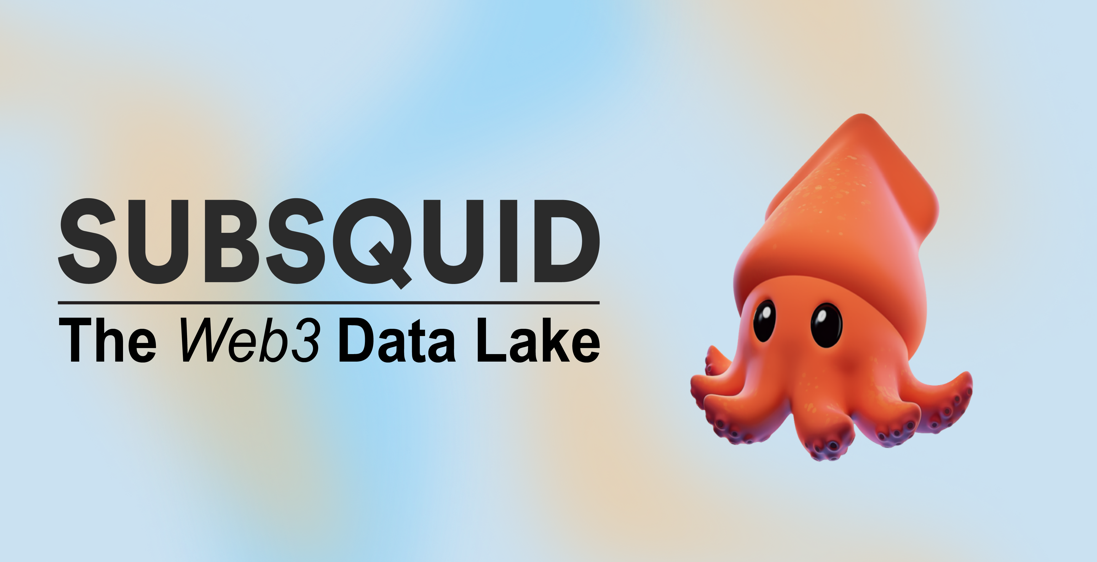What is Subsquid (SQD)? Special features of Web3 Data Network

Data is an indispensable element in the blockchain and crypto world. In this context, Subsquid emerged as a breakthrough data system for Web3, helping to retrieve information from blockchains quickly and at the same time offering an airdrop program to attract users. So what is Subsquid? Let's explore the Subsquid project with Coin68 in the article below!
What is Subsquid?
Subsquid is a new data processing and infrastructure system for Web3, built to help retrieve data quickly and cheaply from over 100 different blockchains. The project uses a decentralized data lake model and SDK toolkit to help build applications for billions of users.
A strong point of Subsquid is that it is built according to an infinite scalable modular model. This means it allows developers to pull data from the data lake using the Squid, Subgraph, or framework SDKs to customize the infrastructure to best suit their project.
Additionally, Subsquid offers great flexibility for next generation blockchain use cases. The project's Index SDK tool allows developers to customize their data sources, targets, and apply their own custom logic.
Ultimately, Subsquid's economic model is designed to gradually reduce data costs for Web3 developers, making it easier for them to develop applications and services across the ecosystem.
How Subsquid works
The Subsquid Index implementation process is divided into two main parts: The process of retrieving on-chain data (called Archives) and the process of converting and displaying data (called Squids).
Squid SDK Index projects (or simply Squids) are ETLQ (Extract-Transform-Load-Query) projects built using the Squid SDK.
Squids collects historical data on-chain and processes it using a user-defined data processor. Once the storage volume in each block is maximized, Squids switches to collecting and processing new block data from the RPC endpoint in real time.
Any data from individual blocks will be discarded and replaced with consensus data. The Subsquid SDK provides an integrated server for displaying data processed using a GraphQL API as well as customizable converters for transactional databases (e.g. Postgres).
Archives are specialized data lakes optimized to extract and filter out large amounts of on-chain draw data (on-chain raw data). Before being fully decentralized, Subsquid Labs will maintain the Archive Endpoints themselves and provide free Squid SDK access.
Components in Subsquid
Data provider
Data provider provides data to serve Subsquid. Currently, Subsquid focuses on on-chain data and the data providers are blockchains. Currently, there is only support for chains using EVM and Substrate.

Data provider operating model
The data provider is responsible for ensuring the quality of the data and ensuring that the data is delivered on time. In the initial phase, Subsquid Labs GmbH acts as the sole data provider for Subsquid.
Ingested data is verified by comparing hashes, then divided into small pieces for compression and saved to a data warehouse, from where the small pieces are randomly distributed among workers.
Scheduler
Scheduler distributes data among workers. The scheduler monitors data updates and worker activity, then sends requests to workers to download new data or redistribute existing data based on the backup target and capabilities for each data set. When workers receive a request from the scheduler, they download the missing data from the corresponding storage.

Scheduler operating model
Logs collector
The log collector has the sole responsibility of collecting liveness pings and query execution logs from workers, gathering them, and saving them to the repository. These logs are signed by the worker's P2P identifiers and pinned to IPFS. This data is stored for at least 6 months and used by other entities.
Reward manager
The reward manager is responsible for calculating and sending rewards to on-chain workers every epoch. The rewards depend on:
- Worker availability during each epoch.
- Number of authorized tokens.
- Number of queries served (in bytes; both scan size and return size are counted).
Validator

Validator operating model
The Validator will verify the logs of executed queries and resend the queries to verify the response at random. If the query's initial response differs from the majority of responses, a complaint is sent up the chain. An open claim goes through an arbitration process, initially handled by Subsquid Labs GmbH.
Detailed information about the SQD project token
Technical specifications of SQD token
Token name
Subsquid
Token
SQD
Blockchain
Ethereum
Contract
Updating
Uses of tokens
governance, utility token
Maximum total supply
1,337,000,000
Circulating supply
Updating
SQD token allocation
Updating.
Uses of SQD tokens
Payment: SQD is used as a means of payment to pay fees to workers running the necessary data pipelines of Subsquid and other workers to serve API requests.
Uses:
- Stake SQD token To participate in the network and become an active node in data processes and serve Subsquid API requests.
- Stake SQD tokens to access premium datasets and get discounts.
Delegate: Stake SQD tokens to a Subsquid node or worker to share a portion of the income from fees earned by that node or worker.
Investment partner of the project

Subsquid investors
Based on data from crypto-fundraising, the Subsquid project has raised 3.8 million USD in 2021. To date, the project has not raised any additional capital, however, in September 2023, the project announced a testnet event aimed at attracting users and developers.
How to make Subsquid airdrop
- Coming Soon 15/01/2024













































![RichBeak News [EN]:How options expiration will affect BTC and ETHA large number of bitcoin (BTC)](https://cdn.bulbapp.io/frontend/images/e128f363-f0c0-413d-a2da-4e9ba9c1e258/1)






